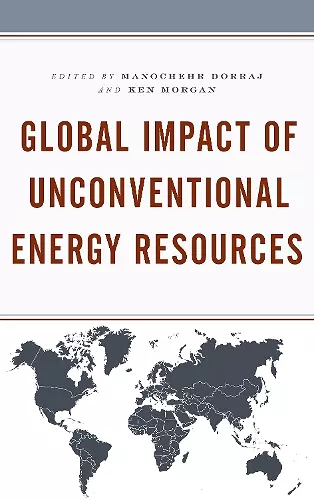Global Impact of Unconventional Energy Resources
Manochehr Dorraj editor Ken Morgan editor
Format:Paperback
Publisher:Lexington Books
Published:15th Jul '21
Should be back in stock very soon
This paperback is available in another edition too:
- Hardback£109.00(9781498566070)

The chapters in this volume represent the latest thinking on the development and exploration of unconventional energy resources in the U.S., Canada, Australia, Europe, Russia, Asia Pacific, Middle East, Latin America, and Africa and shed light on its potential and future prospects in these respective regions. The diversity of thinking about the “shale revolution” is also evident in our case studies. Throughout many countries in Europe for example, there is a strong preference for investment in renewable sources of energy over the fossil fuels. In addition to environmental concerns, the falling price of renewables, have also made them more attractive financially. Consequently, global investment in renewables is outpacing that of fossil fuel two to one. Watching this trend, in 2017, the Chinese government has pledged to invest $360 billion on renewable energy. This would make China the largest investor in development of renewables in the world. Other obstacles to development of shale oil and gas in other parts of the world include, lack of adequate shale resources (Africa), the abundance of conventional energy resources (Middle East and North Africa), high cost of production (Russia, China, Japan) and political opposition to hydraulic fracturing (France and Poland). Despite these sentiments the economic imperatives (providing employment) also play a significant role in determining the future prospects for unconventional energy resources globally.
The “unconventional” energy resources in the title of this collection are shale oil and gas. The volume's 16 contributors are a mix of social scientists, geologists, engineers, and economists based in universities, research institutes, government agencies, and energy management and capital investment firms. This eclecticism of backgrounds affords panoramic, extensively detailed descriptions of the technical, legal, and logistical hurdles future fossil energy extraction faces in regions such as the Middle East, Russia, Africa, Europe, Australia, and the US. . . Most contributors focus on the economic viability of shale exploitation; only the penultimate chapter by Michael Slattery explores, with analytical detachment, the environmental and public acceptability dimensions of unconventional sources. . . useful graphics and tables are provided.
Summing Up: Recommended. Advanced undergraduates and above. * CHOICE *
As humankind figures out how to provide energy in a sustainable way for the Earth’s growing population in the future, the story of unconventional energy—specifically, how these resources came about, and what their arrival means for all of us—will figure prominently in our discussions and planning about what to do next. Dorraj and Morgan are the perfect choice to tell this story via the many and varied contributions captured in this book. This makes a valuable contribution to this important topic. -- Robert K. Perrons, Queensland University of Technology
Unconventional oil and gas resources are contributing a growing share to the world’s fossil fuel supply, and will continue to do so for a while, despite the growth of low carbon energy. Ken Morgan and Manochehr Dorraj have performed a valuable task by assembling a group of specialists to provide insightful accounts of the most important of these resources. The analyses cover a range of historical, technological, commercial and regulatory issues, and provide the reader with a solid understanding of this important source of energy. -- Philip Andrews-Speed, National University of Singapore
ISBN: 9781498566094
Dimensions: 218mm x 154mm x 20mm
Weight: 503g
316 pages